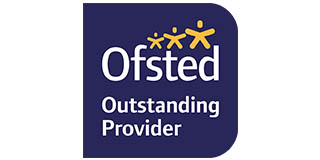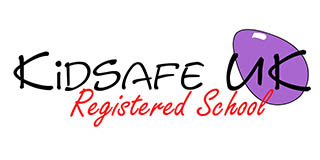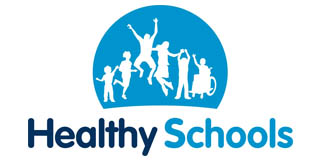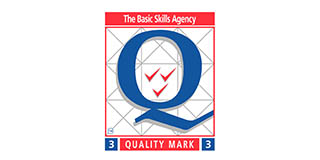Spanish
With God All Things Are Possible

As part of our MFL curriculum, students in Key Stage 2 have the opportunity to learn Spanish. The school made the decision to move from French to Spanish to better support continuity with our main feeder secondary school [Venerable Bede C.E. Academy], and not to disadvantage pupils against pupils from other feeder primary schools.
The national curriculum for languages aims to ensure that all pupils:
- understand and respond to spoken and written language from a variety of authentic sources
- speak with increasing confidence, fluency and spontaneity, finding ways of communicating what they want to say, including through discussion and asking questions, and continually improving the accuracy of their pronunciation and intonation
- can write at varying length, for different purposes and audiences, using the variety of grammatical structures that they have learnt
- discover and develop an appreciation of a range of writing in the language studied.
In Key Stage 2, our pupils start Spanish lessons.
the National Curriculum states that primary schools can teach only modern or ancient foreign languages, school have chosen to deliver Spanish, to support continuity to our main feeder secondary school [Venerable Bede] along with other feeder primaries. Our children are therefore well placed to continue their journey in langauges, building on the well established foundations.
Our Curriculum has been carefully designed in partnership with Clare Seccombe [Light Bulb Languages], a specialist consultant who also helped develop Oak National Academy’s original online primary languages curriculum.
We are very fortunate to also provide years 3-6 specialist teaching from Clare. Spanish lessons are 45 minutes long, once a week.
“Learning a foreign language is a liberation from insularity and provides an opening to other cultures. A high-quality languages education should foster pupils’ curiosity and deepen their understanding of the world”
The 3 Pillars of Language
The pillars of language learning are vocabulary, grammar and phonics. these are taught through the four modalities of listening, speaking,readign and writing alongside Spanish and Hispanic culture.
Phonics
To be able to read, write and speak we need to recognise and understand the phonemes and graphemes of the language. We learn to read and write in English using our Little Wandle phonics scheme in Early Years and Year 1.
When we learn another language, such as Spanish, it is equally as important to learn the new phonemes and graphemes of that language. For example, in Spanish the grapheme “e” makes a sound (phoneme) similar to the sound that in English we represent with the grapheme “ay”. The grapheme “ll” makes the sound “y” as in yellow. Phonics is taught using the Physical Spanish Phonics scheme.
Children are taught the pronunciation of castellano, the variation of Spanish that is spoken on mainland Spain. The pronunciation and vocabulary of the Spanish spoken in the Americas can often be significantly different.
Please see below for each grapheme and its corresponding phoneme. Your child will tell you all about it. They can use it to practise their sounds at home.

Vocabulary
Pupils learn a range of common vocabulary in order to be able to communicate effectively about a range of everyday topics. For example, to be able to describe people, places and things and to be able to ask and answer simple questions. Vocabulary, such as key verbs, size, colours and numbers is revisited throughout KS2 in different contexts in order to secure it in the long-term memory. They will also broaden their vocabulary by using a bilingual dictionary.
Grammar
Pupils are taught to understand and use basic grammatical structures including feminine and masculine forms and the conjugation of high-frequency verbs. Children learn key features and patterns of the language and how to apply these. For instance, they learn that the position of the adjective in Spanish is usually different to that of English (after the noun) and different ways to structure questions. They learn that some words that are capitalised in English are not capitalised in Spanish such as days and months. The level and complexity of the language that children are expected to produce ranges from single words and short phrases in Year 3 to paragraphs in Year 6.
Curriculum Overview
Please see below for an summary scheme of work and progression linked to the 3 key pillars:
| CYCLE | NO. | TITLE | CONTEXT | GRAMMAR | VOCABULARY | PHONICS |
| LKS2 CYCLE A | A1a | Presento a mi familia | greetings and saying your name | llamarse 1, 2 | greetingsnamessaying how you feel | h, qu, vowels |
| A1b | saying the names of family members | llamarse 1, 3possessive adjective mi | ||||
| A2 | ¿Cuánto dinero tienes? | Numbers 1 to 15 counting euros and pesos | tener 1, 2 | numbers to 15euro/peso | ||
| A3a | En el parque de animales | grammatical gender through wild animal words | grammatical gendersingular indefinite articles | 10 x wild animals | v, ce/ci/z, i, j, ll, h | |
| A3b | numbers of wild animals numbers 1-39 | plurals of nounshaynotion of plural | 10 x wild animalsnumbers 1-39 | v, ce/ci/z, i, j, ll, h | ||
| A4a | ¿Tienes hambre? | opinions of singular foods | tener 1, 2, 3expressions with tener (hambre/sed)querer 1, 2, 3 + infinitivenotion of gender opinions (singular)conjunctions y and perodefinite articles (singular) | 15 foods/drinks7 dayshambre/sed4 opinionscomer / beber¿te gusta? | qu, h, z | |
| A4b | opinions of plural foods | tener 1, 2, 3expressions with tener ( hambre/ sed)querer 1, 2, 3 + infinitivenotion of genderdefinite articles el / la /los/lasopinions of singular and plural foodsconjunctions y, pero, sin embargo | 14 singular foods/drinks14 plural foods/drinksHambre/sed4 opinions¿te gustan? | ci/z, j, a, h, qu | ||
| LKS2 CYCLE B | B1 | Nos presentamos | greetings and saying your name meeting animals from the 7 continents | ser 1,2 | greetingsnames4 answers to the question | h, ll, ñ, a, o |
| B2a | Vamos a contar | numbers to 15, survey, maths | tener 1, 2, 3 | numbers 0-15¿Qué número tienes? | ce / ci / z, b/v, cu | |
| B2b | saying your age | tener 1, 2 | numbers 1-15¿Cuántos años tienes?años | ce / ci / z, b/v, cu, ñ | ||
| B3 | Los colores | using ser to say what colour something is | ser 1, 2, 3 | 12 colours¿De qué color es?de color | j, z | |
| B4 | ¿Tienes mascotas? | exploring grammatical gender through talking about pets | ver 1, 2tener 1,2gender of singular nounssingular indefinite articles | 9 x petssí/no | z, j, ll | |
| B5a | ¿A qué fecha estamos? | months and birthdays | possessive adjectives mi, tu, suhayser 3use of conjunction y | 12 monthsnumbers 1-31cumpleaños¿Cuándo es tu cumpleaños? | j, ñ | |
| B5b | days of the week and dates | plurals of nounsser 3use of conjunction y | 7 days12 monthsnumbers 1-31 | j, v, ci/z, a, i | ||
| B6 | ¿Qué tiempo hace? | weather, compass points and towns | tener 1expressions with tener (calor/frío)hacer 3hayestar 3 | 10 weather phrasescompass pointsnames of towns and cities¿Qué tiempo hace? | h, ce, v, ie | |
| UKS2 CYCLE A | C1 | Así soy yo | talking about countries, languages and nationality | ser 1-6hablar 1-6tener 1-6vivir 1-6opinionsinfintivesadjectival agreementrange of conjunctionsuse of conjunction porque +es+ adjectiveuse of no to make verbs negative | 15 countries15 adjectives15 languages6 opinions6 infinitives | h, v, ñ, ce/ci, j |
| C2a | ¡Describimos! | Personal description | ser 1, 2, 3adjectival positionadjectival agreement (fem. sing.)intensifiersconjunctionsmaking verbs negative with no | chico/chica7 adjectives | ge / j, a, o | |
| C2b | describing parts of the head and face | tener 1, 2, 3adjectival agreementadjectival positionplural of nounsdefinite articlesnotion of gender | 7 part of head and faceNumbers 1-1512 colours3 hair colours | z, j, ñ | ||
| C2c | describing the bodies of strange animals | tener 3definite articlesindefinite articlesgenitive form using de | 30 animals17 parts of the body | j, z, ll, h | ||
| C3 | Me encantan los deportes | talking about sports you do and opinions of them | jugar 1, 2, 3hacer 1, 2, 3ser 3definite articlescontraction al1st and 3rd person opinions (singular and plural)conjunction porque + es +adjectiverange of conjunctionsmaking verbs negative with no / no…tampoco | 27 sports6 adjectives / adjectival phrases6 opinions¿te gusta? | gi / j, ci / ce, h, qu | |
| UKS2 CYCLE B | D1 | Números grandes | numbers to 1000 and money | plural forms of nouns | numbers to 1000Euros / céntimos | ce / ci, i, qu, v |
| D2 | Los planetas | describing the planets | ser 3indefinite article unadjectival positionusing intensifiers muy / bastanteconjunction y | 8 or 9 planets8 adjectives plus 11 colourscerca/lejosplaneta / sol / lunanumbers to 1000 | j, qu, ñ, v | |
| D3a | En mi pueblo | describing a town and saying what is there | hay / no hayser 3adjectival agreementadjectival positionintensifiersdefinite articlesindefinite articlesmaking verbs negative with norange of conjunctions | 19 places in town16 adjectivespueblo / ciudad | h, ce / ci / z, qu, ñ, v | |
| D3b | saying what you can do in a town | infinitivesse puedehay / no haymaking verbs negative with noindefinite articles | 19 places in town14 infinitivespueblo / ciudad | gi, ce/ci/z, h, j, v | ||
| D3c | transports and the verb to go | ir 1-6en / a + transporta + el contraction | 19 places in town10 transports | v, h, ci, ll | ||
| NO. | TITLE | CONTEXT | GRAMMAR | VOCABULARY | PHONICS |
Assessment & Transition
Children are assessed on an ongoing basis via a series of “I can” statements which are linked directly to the scheme of work.
Towards the end of year 6, transition information is sent to the destination secondary schools, to ensure a smooth beginninng to children’s Key Stage 3 learning journey.
SEND
Benedict Biscop promotes a curriculum that puts all pupils, regardless of their needs, at the heart of what we do. By building mutual respect, we accept others for their differences believing that everyone is special and everyone has something to offer. Our inclusive and enriching curriculum, written for all children, provides pupils with meaningful and aspirational experiences as well as promoting personal growth for life-long learning. When the curriculum needs adapting, to suit the needs of individual children, appropriate modifications are made by the class teacher with support of the SENDCo and the Curriculum Subject Lead.
Useful Links

Interested in finding out more?
If you would like to find out more about our curriculum. Please contact the school office by emailing BBinfo@nllt.co.uk and we will ask a member of staff to get back in touch a.s.a.p.















